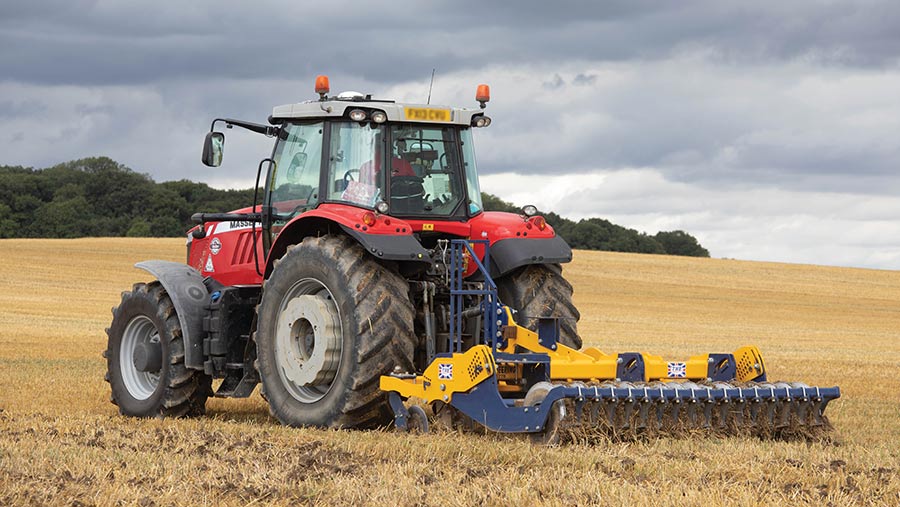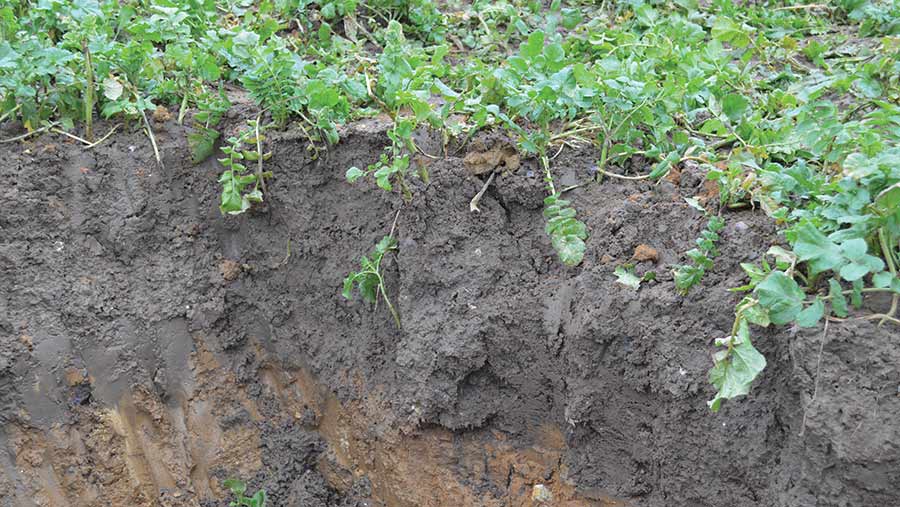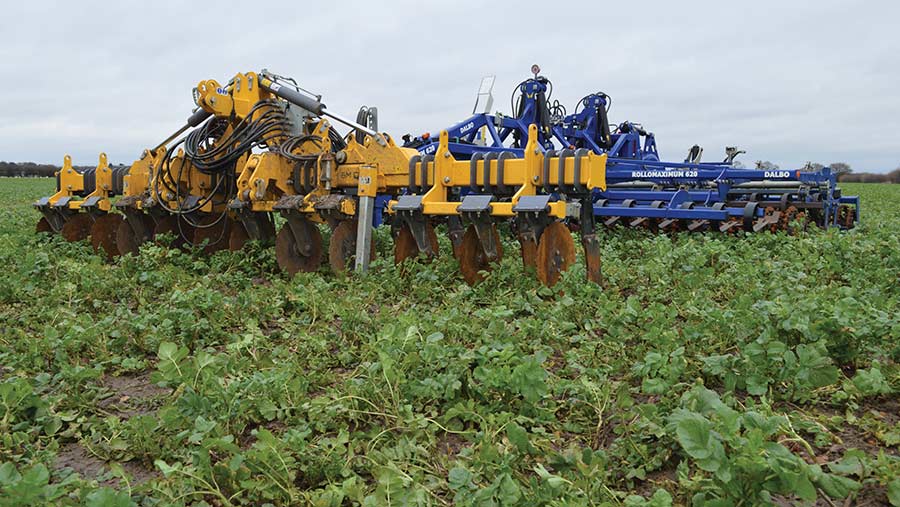Why cover crops and reduced tillage is key to soil health
 © Tim Scrivener
© Tim Scrivener Cover crops can help reduce deep cultivations to improve soil structure and cut expensive machinery costs while tapping into new environmental payments.
These overwintered multispecies cover crops encourage earthworm numbers to increase, store carbon, improve soil water infiltration and can help cut artificial fertiliser use.
Philip Wright, independent soils expert, says most growers in the past were probably doing too many cultivations, causing a loss of soil organic matter, and encouraging soil compaction and erosion.
See also: How one Leicestershire farm is tackling high magnesium soils
“Cover crops and focused cultivations should be the way forward. The longer you go down this path, the less you will need to do cultivations,” he says.
Philip suggests growers focus on shallow cultivations or towards strip-till or no-tillage systems, and only resort to deeper soil cultivations such as subsoiling and ploughing if there is a specific problem.
In the choice between using roots or metal in their soils, he suggests growers start somewhere in the middle and slowly wean off the metal. The success of this strategy will depend on the soil type of the individual farm.
If growers move towards growing cover crops and using no-tillage then the soil improvement will be quicker, but again much depends on the soil, as limestone brash soils can easily be direct-drilled while silts with little structure can be more difficult, he adds.
Philip believes in “strategic tillage”, where cover crop and no-tillage growers may need to have a reset every one-in-five or one-in-10 years to correct any problems with the plough or deep cultivations.
“If we can get to no-tillage and cover crops this is good, but growers may have to do something to alleviate soil problems, such as those caused by bad weather,” he says.
“But this will never take you back to square one. It might only take you back six months in the progress of improving your soils,” he adds.

© David Jones
Philip believes many growers can limit cultivation depth to about 100-125mm, unless they are growing root crops, such as potatoes and carrots, or correcting specific problems.
The key with cover crops is to get the crop established as early as possible, preferably by the end of August, to give the crop a good chance to develop through the autumn.
“The establishment of the crop is much more important than the species used in the mix,” he says.
Cover crops can also attract payments under the Sustainable Farming Incentive (SFI) with a payment made of £129/ha a year for multispecies winter cover crops (SAM2), and for multispecies spring/summer and summer/autumn cover crops of £153-163/ha a year, and in addition £73/ha a year for no-tillage establishment.
David Purdy, soil specialist with machinery giant John Deere, says big changes to soils from growing cover crops can be seen at 150-300mm depth in the profile rather than in the first 150mm below the soil’s surface.
The soils are darker at this depth when using cover crops because they are storing more carbon and produce a wide range of pores in the soil, and this range of pores can only be created by biology rather than by tillage, he adds.
“Cover crops are one of the most promising ways of storing carbon, and they improve the function of the soil in terms of soil biology, structure and the ability to decrease fertiliser requirements,” he says.

© David Jones
Yields rise in Norfolk with focus on soil
Michael Balls has pushed up overall arable yields by 10% in the three years he has managed a large Norfolk farming estate by improving the soil structure on the headlands and starting with strip-till establishment.
He is farm manager at Crown Point Estate, near Trowse Newton, on the south-east edge of Norwich, and is looking to get the farm’s soils into good order before cutting down further on soil cultivations.
There was historic soil compaction at about 200mm depth on many of the headlands across the 1,200ha of arable land on the farm of generally sandy loam soils.
Therefore, he turned to subsoiling at 250-300mm to break through the compacted layer, and with the average field size just 9ha, there were plenty of headlands.
Yields are now climbing, with feed winter wheat varieties such as Dawsum and Champion up to 9t/ha, and Tardis winter barley rising to 7t/ha, while oilseed rape did an impressive 4t/ha at harvest last summer.
The biggest reason behind the yield rise was from the reduced compaction on the headlands, but the move to strip-till was also helping, he says.
Cover crops and oilseed rape have been strip-tilled since he arrived in 2021, and he is now looking to expand this technique to other crops.
This season, 120ha of oilseed rape was strip-tilled and also 280ha of cover crops, with Michael believing the technique gives good establishment as the soil is moved gently just ahead of the seed delivery in one pass of the drill.
Michael believes the farm’s soils need light, gentle lifting at drilling, so the strip-till technique fits the estate’s needs rather than moving immediately to direct drilling.
“With the strip-tilled oilseed rape we are not seeing a big loss of moisture after drilling, while we are seeing better structured soils and less water standing on the surface,” he says.
In the planned move towards more strip-tillage across the farm, he has been looking to use low soil disturbance legs on his cultivators, and once the soils are in good health he hopes to cut back on cultivations.
This autumn, he is looking to strip-till winter wheat following oilseed rape, and hopes to do the same with wheat after early-lifted sugar beet.
The cover crop mixture being used includes phacelia, vetch, black oats and fodder radish. This summer, Michael will assess the mixture to see if it can be more beneficial and will try a catch crop after vining peas to soak up nitrogen in the soil ahead of winter wheat.
The estate also grows forage rye, triticale for seed, spring barley, mustard, mint and grain maize, as well as winter wheat, winter barley, oilseed rape, sugar beet and vining peas.
The 2,000ha estate, owned by the Colman family of mustard fame, also includes extensive woodlands, marshland and field margins, as well as the 1,200ha of arable cropping.
The speakers were attending an AHDB Monitor Farm meeting on enhancing soil productivity held at Crown Point Estate near Norwich in February.

